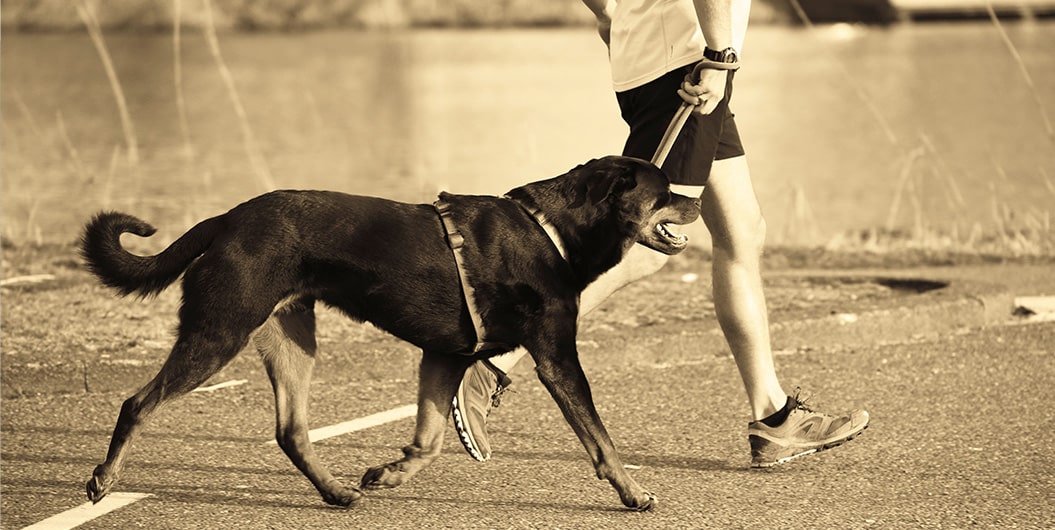What Are the Best Tips for Running with a Dog?

Running with a dog not only provides a runner company on the trail, but it also provides needed exercise to the dog. Going on routine runs will keep muscles toned and allows dogs to release built-up energy. There are various factors to take into account before running or jogging with a dog, such as the health and breed of the dog, the weather conditions, and safety issues while on the trail.
One of the most important factors to consider before starting a running or jogging routine is the dog’s health. Dogs that have health issues or have had them in the past should be cleared by a veterinarian before going on extended runs or jogs. Arthritis, heart conditions, and breathing issues are just a few of the conditions that may hinder a dog from running or jogging especially for long periods of time.

All dogs, regardless of breed, need to build up their endurance prior to taking extended runs. Owners should start out in short sessions and slowly increase the running or jogging intervals until the dog is in proper shape. Even after a routine has been established, dogs need a warm-up period before running and a cool-down session at the end of the run.
The breed is also important when running with a dog. Certain breeds of dog are more apt to running, such as greyhounds, vizslas, and whippets. Some breeds are more adept to long runs while others, such as beagles and pit bulls, are better-equipped for brisk short runs. Greyhounds, weimaraners, and whippets are built for both long and steady jogs, as well as fast-paced runs.
When running, dogs will react differently and have different requirements depending on the weather conditions and the environment. During the hot summer months, running with a dog may require frequent rest and water breaks. Sunscreen should be applied to areas exposed to the hot summer sun. Cold weather brings about a different area of concerns, including paw damage and respiratory issues caused from cold air.

Safety concerns for running with a dog include injury, weather-related illness, and environmental factors. To prevent injury to the dog or the public, dogs should be properly leashed. Most cities have containment or leash laws where dogs must be leashed. When running with a dog where leashes are not required, being aware of the surroundings is important. Wild animals and unfamiliar terrain should be taken into consideration as well.
Along with a leash, owners should keep various necessities on hand while running with a dog, especially when running or jogging far from civilization. Water is the most important necessity, as well as identification attached to the dog’s collar. During the warmer months of the year, owners should consider only running with a dog when the temperatures are at their lowest — in early morning or evening. During breaks, owners should check their dogs for signs of overheating, pad injury, or any type of discomfort.






